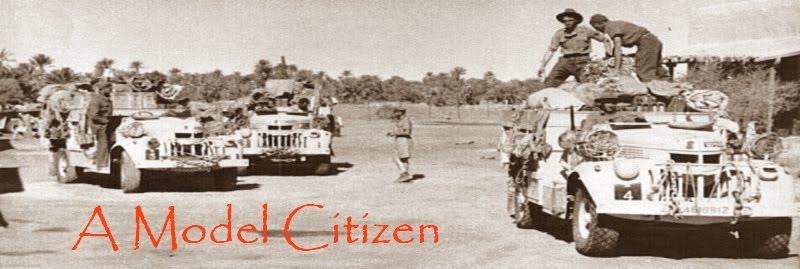In yesterday's post, I neglected to point out the marking options for this kit. Two are illustrated in the instructions: one from an unidentified unit and one from the 2nd Panzer Division, both 1941, and both in panzer grey. The 2nd Pz. Div. vehicle has the "do it yourself" registration numbers where a blank white decal is included along with individual black numbers so you can theoretically assign any number. In this scale, no thanks!
On to construction. Steps 1 and 2 cover the suspension and under-carriage and the attachment of various components to the lower hull. Step 3 covers the mesh "turret", the attachment of items to the upper hull, and the joining of the upper and lower halves. Four indentations need to be filled with putty as this upper hull molding was used for one of the prior versions of this armored car kit.
At this point, I have not attached the mufflers or rear tow hooks and the wheels/tires have been left off for ease of painting. A shot of the underside:
And a shot of the left side. Note the filled indentations used for a previous kit and the heaviness of the mesh in the turret. The equipment has not been added to the rear fenders and the front fenders are added in a later step.
On to construction. Steps 1 and 2 cover the suspension and under-carriage and the attachment of various components to the lower hull. Step 3 covers the mesh "turret", the attachment of items to the upper hull, and the joining of the upper and lower halves. Four indentations need to be filled with putty as this upper hull molding was used for one of the prior versions of this armored car kit.
At this point, I have not attached the mufflers or rear tow hooks and the wheels/tires have been left off for ease of painting. A shot of the underside:
And a shot of the left side. Note the filled indentations used for a previous kit and the heaviness of the mesh in the turret. The equipment has not been added to the rear fenders and the front fenders are added in a later step.














